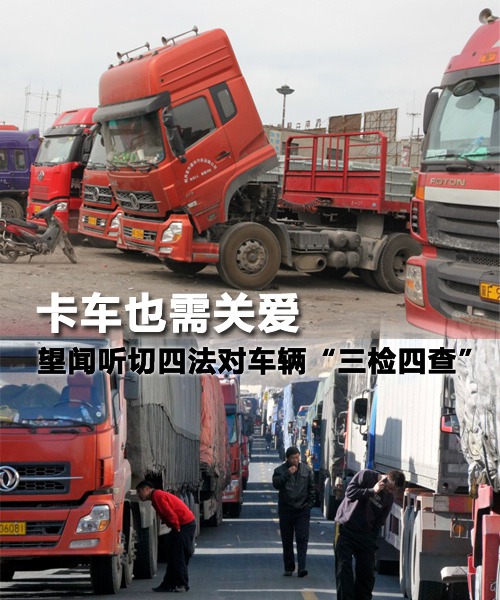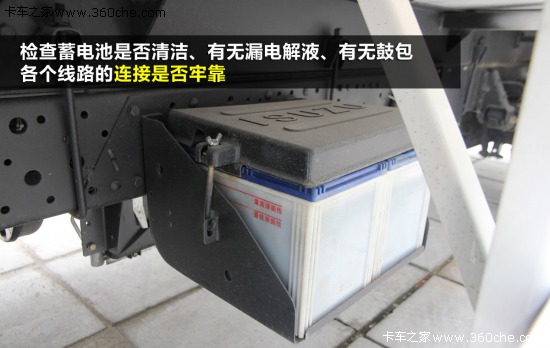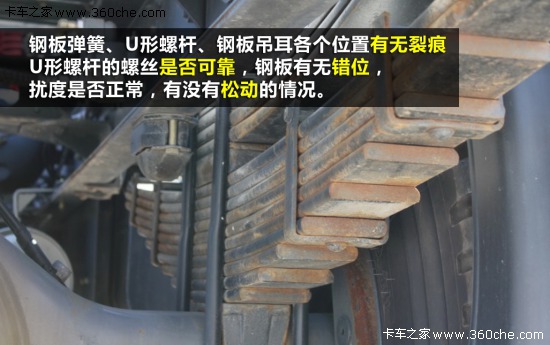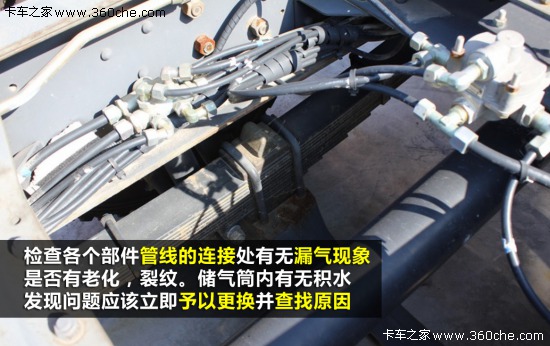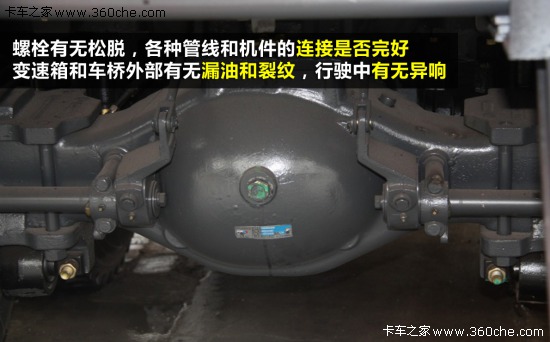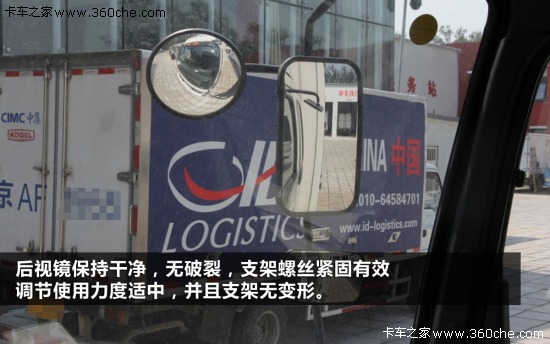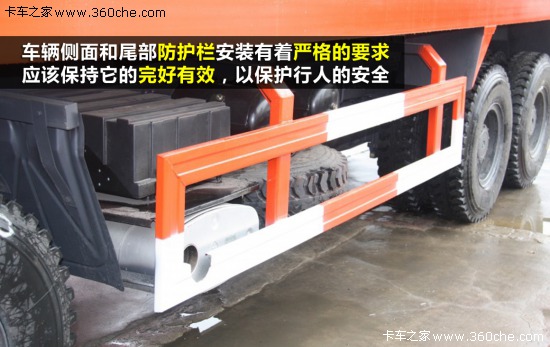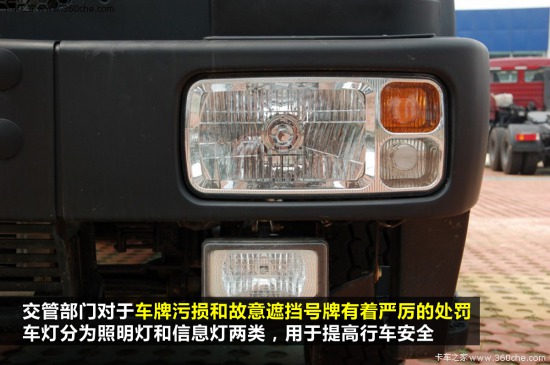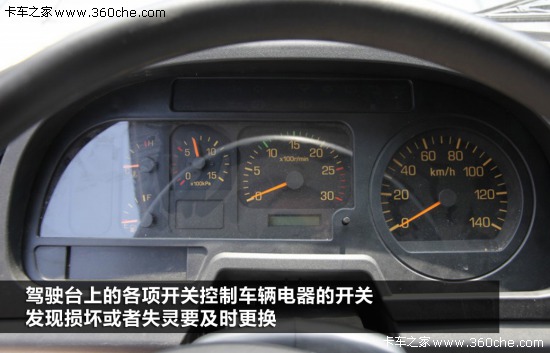[Xiagong Chu Sheng original] normal inspection is not in place, often cause abnormal damage to the vehicle parts, and even cause serious accidents. In the end, what parts of the body should we examine and how do we judge whether these areas are normal? ◠What is "three inspections and four investigations"?  Three inspections: Refers to the inspection of various parts of the vehicle before, during and after the vehicle is taken out.  Four checks: refers to the vehicle engine, chassis; cab, vehicle appearance, driving through the observation of the vehicle, smell smell, listen to sound, touch the temperature and other means for a detailed inspection of the vehicle components. There are "look and ask" in Chinese medicine. Here we call it "sound and hearing" four methods. ◠ Engine, chassis part inspection  1. Water tank, water pump, water pipe, water block Check the water tank, the water pump, the water pipe, the various parts of the water plug, and the connection between the pipe and the pipe. Are there any signs of water leakage? The water pipe has no aging or wear. The fastening of the two pipes is not loose.  2. Inspection of generator and starter Check whether the screws on the generator and the starter are missing or loose. Check whether the line connection is effective and reliable, whether there is bare or aging, and find that it should be fastened or bandaged immediately. For the aging line, it should be replaced in time.  3. Cooling water and water temperature To ensure sufficient coolant in the engine, the normal temperature should be between 80 and 90 degrees, and it should be observed at any time during the running of the vehicle. Xiao Bian suggested that you should use the same kind of antifreeze.  4. Oil amount, viscosity, color Oil is praised as the “blood†of the car and functions as a lubricant, clean, seal, and wear-reducing engine. By observing the oil, you can intuitively understand the “health†of the engine. The amount of oil should be between the upper and lower scales on the oil scale. Too much or too little is not good. At the same time, the color of the oil is also observed. After a certain period of time, the engine oil will normally turn black. The appearance of milky white and the presence of bubbles indicates that the engine oil is mixed with water. For the oil viscosity, many drivers see the flow speed of the engine oil. To judge, in fact, this is unscientific and needs to be measured by a viscometer. The replacement of the oil must be carried out in accordance with the manufacturer's instructions to change mileage.  5. Inspection of the battery Check whether the outside of the battery is clean, whether there is electrolyte leakage, whether there is bulging, and whether the connection of each line is firm. When using the battery, feel whether the temperature of the battery is too high. When adding the electrolyte, it should be controlled within the upper and lower marks.  6. Belt, fan For engine inspection without tensioning wheels, check the belt for cracks and aging. The tension should be 10mm~15mm under the thumb pressure of 40N~50N. If you have a tensioner, you only need to check the belt for cracks and aging. Check the fan for broken or damaged blades. 7. Steering straight rod end  The company before Xiao Bian was not able to check the position of the tie rod ball head because the driver did not check the straight tie rod ball head. The straight tie rod ball head fell off during the drive and caused serious traffic accidents. Therefore, the inspection of this position should be the focus and check whether the lubrication is good. Whether there is loosening and deformation, whether there are cotter pins on each fastening nut, and confirm that it is effective.  8. Inspection of the steering wheel Turn the steering wheel left and right, the steering wheel is not deflected. This freewheeling angle is called the steering wheel's free stroke or movement gap. This angle should be between 10-15 degrees.  9. Clutch, sub-pump and sub-pump push rod, clutch bearing Daily inspection of the various components of the clutch for oil leakage and air leakage. The addition of clutch hydraulic oil should be maintained between the upper limit and the lower limit. The clutch release bearing should be no noise when the pedal is depressed and raised.  10. Inspection of transmission shafts and tires Check all parts of the drive shaft, such as the big nut, each position screw, the half shaft screw, and the tire screw, and check whether the screws at the joint are short or loose. If any problem is found, it should be fastened or replaced. Every day, the tire pressure, wear and tear are well known, and the stones on the tire, abnormal wear and cracks should be removed and the cause must be eliminated. Brake drums and wheels check for cracks and oil spills.  11. Leaf spring, U-shaped screw, steel plate hanger Check whether the leaf spring, U-shaped screw, and steel plate lifting lug have cracks at each position. Whether the U-screw screw is fastened reliably or not, whether the steel plate is misaligned or not, whether the disturbance is normal and there is no looseness.  12. Parking brake, brake line, brake valve, air reservoir Check the connection between the components and the pipelines for signs of air leaks, aging of pipes, and cracks. Waterproofing the air reservoir is a daily task. Find the problem and replace it immediately to find the problem.  13. Transmission, axle inspection Check for loose bolts, various pipelines are in good condition, and there are no oil leaks or cracks on the outside of the gearbox and axles. Watch for sounds when driving. ◠ Inspection of vehicle appearance  1. Windshield, rearview mirror and mirror bracket When small cracks appear in the glass, they should be dealt with in time. For the laminated glass, Xiao Bian has seen many cracks in the front windshield after being cracked. This can effectively prevent cracks in the glass after cracking. The rearview mirror mirrors are kept clean at all times without cracks. The bracket screw fastening is effective. If adjusted, the use force is moderate, and the bracket is not deformed.  2. Cab, body, fence The cab and body exterior are cleaned at any time, and attention is paid to paint, breakage, deformation, etc. that are not caused by scraping. Whether the door of the car door is closed is tight and flexible. If it is a van, it should be observed whether there is any leakage in the cargo bed. The problem should be repaired immediately to ensure the integrity of the transported goods. Our country has strict requirements for the installation of the side and tail protection rails of vehicles, and it should be kept intact and effective.  3. License plates, lamps and lanterns The vehicle number plate directly shows the information of this vehicle. The traffic control department has severe punishment for the license plate's defilement and intentionally obstructing the number plate. Usually, the license plate is wiped clean. The driving also has a responsibility and unnecessary punishment. The light fixture is the eye and information display of the vehicle. Turning on the headlights at night, we can clearly observe the road surface. If you want to turn or brake, etc., you can directly show through the lights. Other vehicles can also clearly understand your intentions, thus reducing the occurrence of accidents. Therefore, we must ensure that the lighting is complete and effective.  4. Fuel tank, fuel tank cap, oil volume The fuel is directly linked to our purse, usually checking whether there is any leakage on the surface of the fuel tank and whether the fuel tank cap is intact and effective. Is the amount of fuel sufficient for the oil used in our route? ◠ In-cabin inspection 1. Combination switch and instrument The various switches on the bridge control the opening and closing of various electrical appliances of the vehicle, and they must be ensured to be effective. It should be promptly replaced if the switch is damaged or malfunctioned. Observe the various indicators and indicators on the instrument panel during normal driving to see if there are abnormal or inoperative conditions and find that they need to be repaired and replaced in time because they directly reflect the working conditions of the various components of the vehicle.  2. Cab door, window regulator switch, seat, seat belt The normal opening of the cab door is ensured, there is no water leakage after closing, and the glass lifter switch is reliable and effective. Seats and seat belts are directly related to the comfort of driving. It is important to ensure that the seats are not damaged, that they are comfortable, and that seat belts are related to life safety. ◠ Driving inspection For the inspection of the vehicle, we can inspect the vehicle by simple observation.  1. Look at the meter - look Through the observation of the various instruments of the vehicle, the water temperature gauge, oil pressure gauge, voltmeter, barometer, etc. have a normal range, and it is necessary to ensure that all pointers are within this range (water temperature: 80-90 degrees Inter-engine oil pressure: about 0.2Mpa idle speed, about 0.4Mpa when the engine is running at high speed (different from engine to engine, subject to manufacturer's instructions); voltmeter: about 24V; barometer: guaranteed in the “green zone†range of the instrument It is not good to be too big or too small. Always observe the body and tires through the rearview mirror to prevent accidents.  Smell smell smell When the vehicle is running normally, there should be no odor. If the vehicle smells an odor, it should be stopped and checked immediately. If you smell the diesel smell, it may be oil leakage in the pipeline; if you smell the odor, it may be a short circuit, etc. This requires you to observe it more often at ordinary times.  3. Listen to the sound - listen When a vehicle's mechanical parts fail, they often accompany the sounds. When the vehicle hears abnormal sounds, it is necessary to stop the vehicles in time for inspection so as to avoid causing greater losses. You can also use the "listen" method when repairing your car. Barcode Security Label Sticker We print 2-dimensional barcode, QR code onto holographic white area which is easily to be read by equipment. This hologram label is developed for QR code print only. Once you have a QR reader app on your smartphone, you can point your camera phone at these codes and immediately grab useful information. Barcode Security Label Sticker,Barcode Security Labels,Security Barcode Stickers,Custom Barcode Labels Shenzhen Tuteng Anti-Counterfeiting Co., Ltd. , https://www.szholographicsticer.com